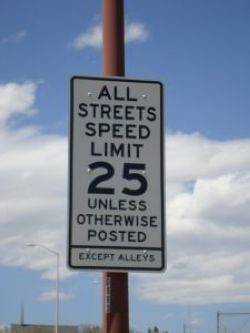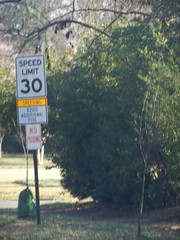Because of various job and other responsibilities, I am not able to pay as much attention to/testify with regard to issues in DC, even those concerning pedestrian and bicycling issues, which are critically important "indicators" for placemaking and livability that would concern me even if I didn't bicycle or work as a sustainable transportation planner and as a partner in a business focused on "bicycle facilities systems integration."
(In fact, even though there is a Ward 4 opening on the DC Bicycle Advisory Committee, I decided not to apply, because I am already over-committed in terms of my community/nonprofit volunteerism and activities and I didn't think I could give it the necessary attention--plus there could be conflicts of interest wrt my job... But other people should definitely apply, see "
Bicycle Advisory Council Vacancies" from Washcycle.)
Similarly, I was not able to attend the last month's hearing on bicycle and pedestrian safety convened by Councilman Mendelson, although I did testify at January's hearing on winter-time sidewalk maintenance.
Washcycle makes the point that CM Evans misses the point in his evaluation of the new 15th Street Cycletrack. From
15th Street bike lanes and measuring the wrong thing:
[Councilmember Evans is] also confused by the bike light at 15th from Penn. he talks about it again as "not working" because drivers and residents are complaing and it's confusing.
What I wanted to say, but hesitated and missed my chance, is that Evans was making the classic science mistake of measuring the wrong thing. He's looking at complaints from drivers and residents and determining that the 15th street cycletrack is "not working." But reducing driver and resident complaints was not one of the goals of the 15th street cycletrack. The goals were to calm traffic, provide more options for cyclists and increase bicycle trips. In addition there is the implied goal of maintaining or increasing safety.
For Evans to say that it's not working, he needs to show that it is not meeting one of these goals. But, he doesn't. I'm not sure anyone can. DDOT really can't accurately study them until after they've been in for a year so that they can compare data without seasonal effects throwing the numbers off.
All he has is complaints from drivers - who have been slowed down BY DESIGN - and residents (though he never goes in to what the residents complain about, so that's impossible to address). There ar no complaints from cyclists or pedestrians. There is no evidence that the road has become less safe. There is no evidence of increased speeding. There is no evidence that it is decreasing bicycle trips. There is absolutely nothing to support his claim that it is "not working".The biggest problem overall is that most of the legislators are asking the wrong question(s) about bicycle and pedestrian safety, because they are mostly responding in reaction to complaints by drivers, rather than considering (1) the overall question of safety of all users of the street and sidewalk network, (2) how the system of laws, policies, regulations, and rules is structured to manage movement of the different classes of users, (3) whether or not the system is working, (4) what are best practices elsewhere, (5) and what could and should be done here, (6) in the context of the fact that the center city mobility system and spatial pattern was designed to optimize walking, transit, and bicycling, not the movement of automobiles.
This is another example of how the failure to have a general DC Master Transportation Plan is maybe the overarching problem (although who is to say it would actually be great, like Arlington's or Seattle's, rather than average?), because we don't have a common-consensus document from which to develop policy and practice--basically we are all grabbing different parts of the elephant, thinking we have the whole picture, when clearly we do not.
A Master Transportation Plan for DC should not treat all transportation modes as equal, but should focus on optimality--prioritizing mobility throughput.
Furthermore, the plan should acknowledge and its goals, policies, and objectives should recognize that DC is a city with a particular spatial pattern and design and character (which derives from the Walking and Transit City eras, see "
The Automobile Shapes the City: From 'Walking Cities' to "Automobile Cities'" and the seminal paper, "Transportation and the Urban Form: Stages in the Spatial Evolution of the American Metropolis" by Peter Muller (
summary)) where urban design, placemaking, and transportation infrastructure should optimize walking, transit, and bicycling, not motor vehicle traffic.
Similarly, a Master Transportation Plan for DC (which is a unitary government, so unlike most transportation plans for cities and counties where for the most part highway safety is primarily a state responsibility) should prioritize the safety of the most vulnerable users.
In the context of street safety, pedestrians and cyclists are the most vulnerable users. But the way the highway safety regime works (see "
Wrong Turn: How the fight to make America's highways safer went off course" by Malcolm Gladwell from the
New Yorker), drivers are expected to be negligent, to even kill people, and the system isn't intended to hold them responsible for such transgressions, but to expect and coddle such behavior.
This makes no sense, considering that motor vehicles, because of their weight and speed, are far more dangerous to vulnerable users compared to the minimal if nonexistent danger that vulnerable users pose to motor vehicles.
The right questions to ask are:
1. What kind of mobility policy do we need to have for the city and how does that play out in each element of a transportation plan?
For example, Arlington's plan prioritizes throughput of people, not maximizing the speed of automobile traffic. Each of the elements of the plan is internally consistent and consistent with the overall goal of maximizing throughput. For example, parking on the street is planned and managed to prioritize pedestrians and transit, and car sharing spaces are reserved in the belief that this provides support to people who walk, bicycle, and transit, but may desire occasional access to a car.
2. With regard to safety within the mobility network, prioritization of the city's urbanity, placemaking, and quality of life, how can the system be modified to best protect those most at risk? (and how should that be handled in a master transportation plan for DC).
Evidently, this question was not posed at the BAC/PAC oversight hearing.
Rather than Councilmembers basing the hearing on their recounting of anecdotal complaints by motor vehicle operators and/or taking out of context particular incidents involving errant and wrongful behavior by bicyclists and pedestrians, they needed to be considering the question of traffic safety more broadly and comprehensively, and in an integrated fashion.
The system is not built right/broken, and DC needs to re-create a traffic safety program for DC which prioritizes safety, especially for vulnerable users, in the context of an urban environment, where walking, transit, and bicycling is prioritized over motor vehicle movement.
Here's my multi-part agenda for process redesign of the "street safety" regime in DC:
1.
Change the laws imposing responsibility for accidents on motor vehicle operators. This text comes from "
Road Rights: Why We Need Cycling Insurance" from
Bicycle Law and I have modified it slightly, with modifications in italics.
In the Netherlands, the law imposes a rebuttable presumption of liability on drivers, if a motorist is involved in a crash with a cyclist or pedestrian, the law presumes that the motorist is liable for the crash, unless the motorist can rebut that presumption with evidence to the contrary. The reason for this shift is that the Dutch recognized that the cyclist or pedestrian will virtually always be the injured party in a collision with an automobile, and by putting the onus of fault on the driver, have provided motorists with a powerful legal incentive to pay more attention to the presence of cyclists and pedestrians. Thus, it wouldn’t be legally sufficient for a Dutch driver to merely claim “I didn’t see him”—the most common excuse drivers use in the United States—in order to escape liability. Instead, the Dutch driver would have to prove that the cyclist’s/pedestrian's own negligence was the cause of the collision. And even if the Dutch driver can successfully rebut the presumption of liability, the driver’s insurance is still required to pay the cyclist’s/pedestrian's medical bills.2.
Post signage at entries to the city that makes clear that unless otherwise posted, the speed limit on city streets is 25mph.
This prevailing speed is atypical within the metropolitan area, and as a result, many nonresidents drive much faster than the posted speed limit on DC's streets.
3.
Raise the fines for speeding. Note that
§ 46.2-878.2 of the Code of Virginia was revised in 1999 to provide for additional fines up to a maximum of $200 for exceeding the speed limit in a residence district of a county, city or town, where indicated by the appropriately placed signs.A similar policy should be enacted in DC, but extended to what we might call "pedestrian districts"--commercial districts, and areas abutting schools, parks, libraries, and other civic assets. (School zones usually already have a higher fine for speeding infractions.)

 First sign: City of Colorado Springs, Colorado. City photo. Second sign: Cary Street, Richmond, Virginia. (My photo: not very clear, I know.)
First sign: City of Colorado Springs, Colorado. City photo. Second sign: Cary Street, Richmond, Virginia. (My photo: not very clear, I know.)
4. Redesign roads to engineer speed outcomes closer to the desired speed limit.
That means that in commercial districts (e.g., in Cleveland Park, Georgetown, Chevy Chase, H Street NE, Pennsylvania Avenue SE from the Capitol to 8th Street, etc.), around schools, libraries and parks (such as around Stanton Park, Lincoln Park, Grant Circle, Sherman Circle, Washington Circle, etc.), roads should be paved in asphalt block, which provides visual, aural, and physical cues to drive at lower speeds.
Monument Avenue in Richmond, Virginia. Flickr photo by Marshallaberystwyth.
5.
With regard to the operation of bicycles, the Idaho Stop should be legalized, and with regard to bicyclists riding on sidewalks, the "posted" speed limit for bicycle riding on sidewalks should be 3mph (people typically walk at a speed of 3-4 miles per hour).
6. The process for receiving driver's licenses should be modified to ensure that multiple questions concerning the rights and responsibilities of pedestrians, bicyclists, and drivers are included in all tests, and rather than an automatic renewal of driver's licenses, a refresher test on these rights and responsibilities should be added to the process to remind users of these rights and responsibilities.
7. Rather than rely on anecdote to shape Council hearings, law, and policies, the City Council should endeavor to raise its "game," for all issues, not just for transportation.
This is the kind of best practice that DC should look to develop with regard to the conduct of local government more generally. Certainly, City Council hearings shouldn't be shaped by the anecdotal unstructured stream of complaints that the overly entitled are likely to drop on Councilmembers.
Labels: bicycling, car culture and automobility, government oversight, public administration, public safety, transportation planning, urban design/placemaking, walking






0 Comments:
Post a Comment
<< Home